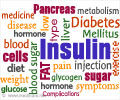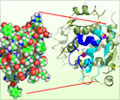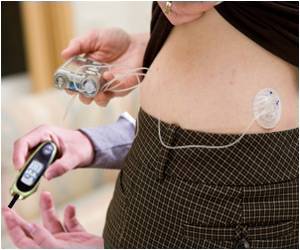Insulin can be chemically modified by replacing a hydrogen atom with an iodine atom to optimize treatment for diabetes.
Highlights
- Insulin is a hormone produced by the pancreas to regulate blood sugar levels.
- Replacing the hydrogen atom of insulin with an iodine atom may improve release and availability of insulin.
- Chemically modified insulin may help to optimize treatment for diabetes.
Insulin is produced in the Islets of Langerhans in the pancreas and regulates blood glucose levels.
According to the Centers for Disease Control and Prevention, around 2.9 million people in the United States were found to depend only on insulin for diabetes treatment during 2010-2012.
Aim of the Study
The research team aims to develop artificial insulin to optimize treatment for diabetes mellitus.
Replacing the individual atom of the insulin molecule in a targeted manner may be a strategic approach to develop insulin analogs.
The research team led by Professor Markus Meuwly from the Department of Chemistry at the University of Basel along with scientists from the USA and Australia has investigated the chemically modified insulin.
A single hydrogen atom of the insulin molecule was replaced by an iodine atom. This may help to modulate intermolecular interactions which may speed insulin release and availability.
Replacing the hydrogen atom with iodine atom may also retain the affinity for insulin receptor and biological function when compared to the natural insulin hormone.
These advantages of chemically modifying the insulin were first predicted using quantum chemistry and molecular dynamics simulations.
The changes in stability of the modified insulin were studied using crystallographic and nuclear magnetic resonance experiments.
Applications of Chemically Modified Insulin
- Using halogen atoms like chlorine, iodine may help to optimize compounds for treatment.
- Iodinated insulin may provide potential in the field of protein engineering.
Insulin is an essential hormone that carries out various metabolic processes to provide energy. Insufficient production of insulin may cause diabetes. Increased blood sugar level is one of the most common symptoms of diabetes. Insulin plays a major role in controlling the blood glucose levels.
Insulin is available in various forms to improve the ease and accuracy of administration. They may include
- Insulin syringe
- Insulin pens
- Injection port
- Insulin jet injectors
- Inhalational insulin
- Insulin pumps
Types of Insulin
Rapidly Acting Insulin - They may act within few minutes (1-2 minutes) of the injection.
Examples: insulin lispro, insulin aspart
Short-Acting Insulin - The onset of action is within 30 minutes of injection.
Example: Regular insulin
Intermediate Acting Insulin - It may act within 2-5 hours of injection and may reach the peak at 8-10 hours.
Example: Neutral Protamine Hagedorn (NPH)
Long-Acting Insulin - This type of insulin may last for more than 24 hours.
Examples: Insulin glargine, Insulin detemir
References
- Krystel El Hage, Vijay Pandyarajan, Nelson B. Phillips, Brian J. Smith, John G. Menting, Jonathan Whittaker, Michael C. Lawrence, Markus Meuwly, Michael A. Weiss. Extending Halogen-Based Medicinal Chemistry to Proteins: Iodo-Insulin as a Case Study. Journal of Biological Chemistry (2016), DOI: 10.1074/jbc.M116.761015
- Estimates of Diabetes and Its Burden in the United States - (https://www.cdc.gov/diabetes/pubs/statsreport14/national-diabetes-report-web.pdf)
- Types of Insulin - (http://www.boomer-itis.org/types_of_insulin.html)
- Insulin Basics - (http://www.diabetes.org/living-with-diabetes/treatment-and-care/medication/insulin/insulin-basics.html)
- What Does Insulin Do? - (http://www.hormone.org/hormones-and-health/what-do-hormones-do/insulin)
















